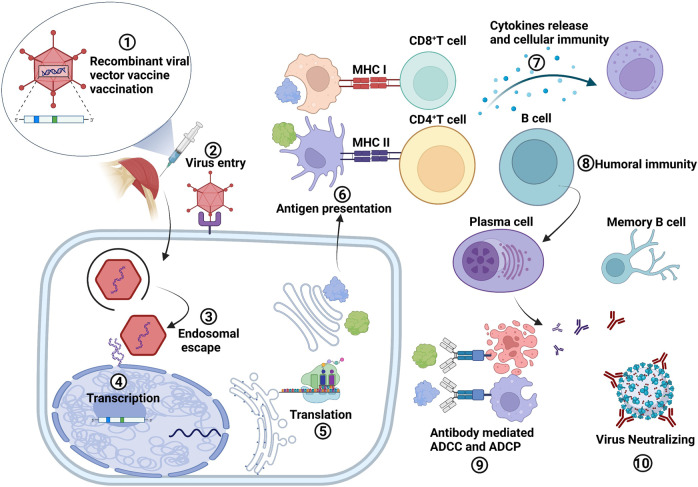Fig. 3.
Antigen presentation mechanisms of intramuscular-delivered viral vector vaccine. (1) Construction and vaccination of a recombinant viral vector vaccine. (2) Viral vector vaccine is taken up by muscle cells through endocytosis. (3) Endosome escape from viral vector vaccine. (4) Partially disassembled virus capsid traffic to the nucleus, initiating the transcription process. (5) Protein translation and post-translational modification in endoplasmic reticulum and golgi apparatus. (6) Antigen proteins are presented to antigen presenting cells. The antigen can be loaded onto MHC class I for direct presentation to CD8+ T cells, and loaded onto MHC class II for direct presentation to CD4+ T cells. (7) T cells lyse infected cells under the mediation of cytokines. (8) Stimulated B cells differentiate into memory B cells and antibody-releasing plasma cells. (9) Antigen proteins are recognized by antibodies, including those capable of Fc-mediated effector function, including antibody-mediated cellular cytotoxicity and antibody-dependent cell-mediated phagocytosis. (10) Neutralizing antibodies neutralize pathogens and block their entry. (Created in BioRender)

